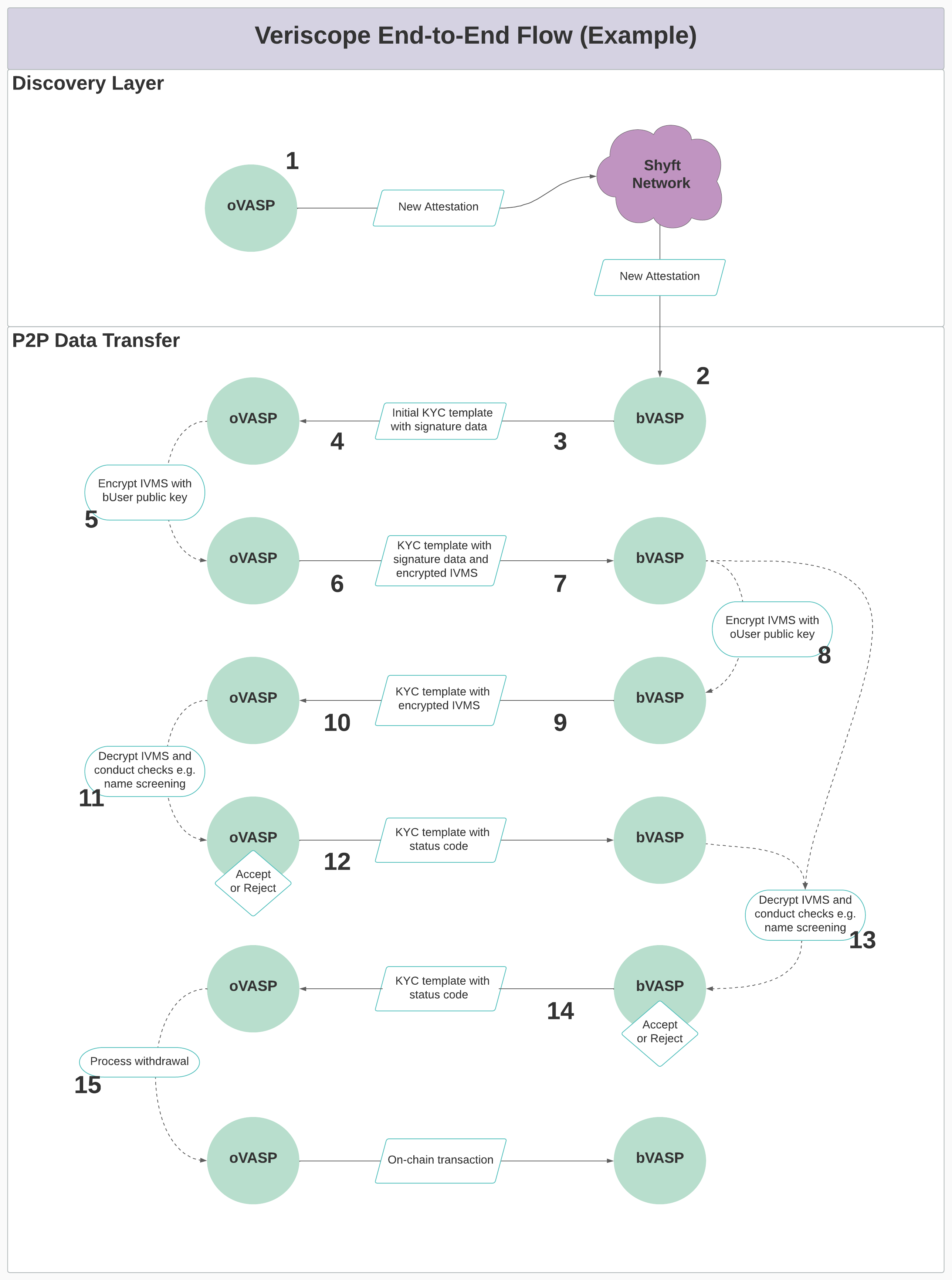Phase 3: RESPOND - How to implement a solution
Phase 3 requires VASPs to implement most Veriscope API endpoints and subscribe & respond to webhook events.
Implementation requirements are best understood by walking through a full end-to-end flow from attestation through to decrypting IVMS data and accepting/rejecting a transfer. Please refer to the End-to-end Walkthrough Guide.
Overview of the end-to-end flow

| Step | VASP | Task |
|---|---|---|
1 |
oVASP |
Post attestion. The attestation is posted to all nodes as a webhook event. |
2 |
bVASP |
Receive attestation |
3 |
bVASP |
Create and send initial KYC template with signature data |
4 |
oVASP |
Receive initial KYC template |
5 |
oVASP |
Encrypt KYC/IVMS data with bUser’s public key |
6 |
oVASP |
Send updated KYC template with signature data and encrypted KYC/IVMS data |
7 |
bVASP |
Receive updated KYC template with encrypted KYC/IVMS data |
8 |
bVASP |
Encrypt KYC/IVMS data with oUser’s public key |
9 |
bVASP |
Send updated KYC template with encrypted KYC/IVMS data. The encrypted KYC/IVMS data must be before a status code can be sent. |
10 |
oVASP |
Receive updated KYC template |
11 |
oVASP |
Decrypt bVASP KYC/IVMS and perform checks (e.g. name screening) and decide whether to proceed (accept/reject the transfer) |
12 |
oVASP |
Send updated KYC template with accept/reject status code |
13 |
bVASP |
Decrypt oVASP KYC/IVMS and initiate additional checks (e.g. name screening) |
14 |
bVASP |
Send updated KYC template with accept/reject status code |
15 |
oVASP |
Process the withdrawal / broadcast on-chain |